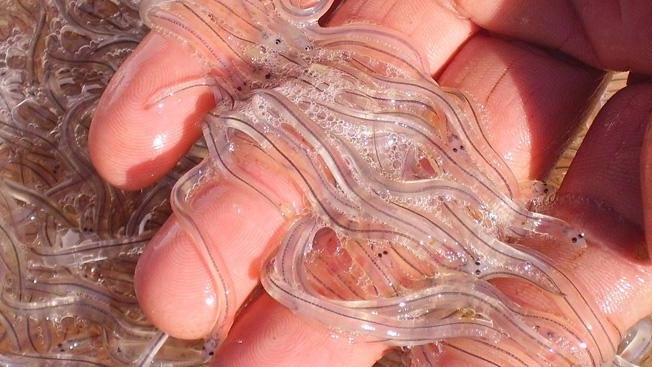On the verge of extinction
22. 10. 2018
The Conference on the Illegal Wildlife Trade, held last week in London, was hardly mentioned by the Czech media. It was as though the protection of elephants, rhinoceroses, pangolins and other species threatened by poaching and illegal trade were not our concern. Of course it is, which some of Czech zoos as well as other organizations taking part in efforts to protect them understand. At the same time, however, the conference’s topic concerned the Czech Republic in a much more direct way. Besides the fact that illegal trade in animals takes place in our territory and involves Czech citizens, there is also the fact that one of the species threatened by this trade is also an iconic creature of our rivers and even literature: the European Eel.

Even in the days when the heroes of Ota Pavel’s books set out to hunt eels, there were far fewer of them living in our waters than in the distant past. Unchecked hunting has certainly left its mark on the decline in the number of these serpent-like fish, but the main cause has been the construction of hydraulic engineering projects. These have prevented juvenile eels, born in the Sargasso Sea, from advancing upstream. Since the 1950’s, young eels (sometimes called glass eels) have been artificially released into our rivers and ponds, but the migration of eels in the opposite direction was already limited, and a large proportion of the adults was not able to return to the sea from the inland waters. They had died – and still are dying – primarily in hydroelectric turbines. In addition to this, there is water pollution by various foreign substances, the rapid spread of the eel parasite Anguillicoloides crassus and changes in sea currents, which may well endanger eel larvae during their journey from the Sargasso Sea to Europe’s rivers. The European Eel is on the verge of extinction. It is said that in the Czech Republic its numbers have decreased to just one hundredth of what they were before.
Illegal trade also plays a significant role in this desperate situation. It concerns glass eels, which are hunted off the European coast. The number caught is falling year after year, which is one of the reasons that, as of 2010, they can only be traded in the European Union. However, there is also an enormous interest in Asia, especially in China, where the local eel species have almost disappeared. The price for glass eels has risen to thousands of euros per kilogram, so it pays to smuggle them by air, either hidden in suitcases fitted with a special oxygenation device or concealed among seafood. It is no exaggeration to say that it’s a business worth billions. Estimates of the volume of illegally traded glass eels range from 7 to 100 tons per year. The higher of the numbers, which come from Europol, would represent about one quarter of the entire European population.
When I think about it, it looks like the European Eel has an even gloomier outlook than the elephants or rhinoceros mentioned in the introduction. It is very sad indeed.
Miroslav Bobek
Director of Prague Zoo








